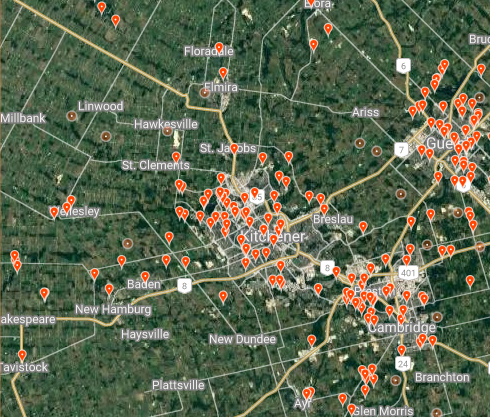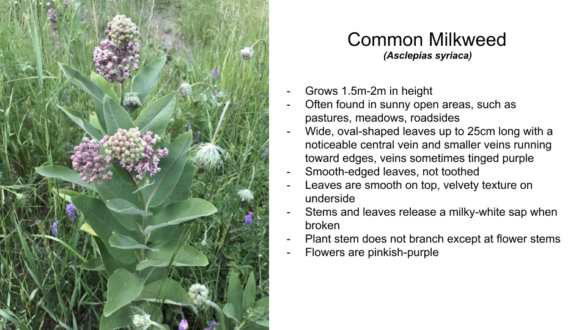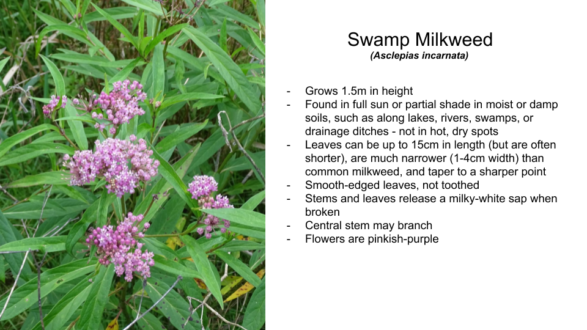
Milkweed plants are in decline, and this is one of the reasons that Monarch Butterflies are a threatened species. Milkweed is the only plant that the caterpillars of Monarchs eat, and it is essential for Monarch survival. All of us can help with this! We need to know the location of milkweed in Waterloo Region and how many Monarchs are developing on them.
Milkweed Identification
Don’t know how to identify milkweed? No problem. Here is a downloadable two-page resource for identifying Milkweed in Waterloo Region.
Common Milkweed is the variety you are most likely to find in Waterloo Region, but Monarch Butterflies also like another less-common variety called Swamp Milkweed.
Milkweed Distribution in Waterloo Region:
This map shows the milkweed patches that are currently identified in Waterloo Region (image taken from the iNaturalist website).
This map gives us a rough idea of the distribution of milkweed, but has a few gaps. Importantly, there are only 184 observations of milkweed in all of Waterloo Region and Guelph!
Now let’s look at a map of the same area showing iNaturalist observations of Monarch Butterflies.
545 iNaturalist observations of Monarchs are recorded in the same area! This may be a classic example of observer bias… everyone takes pictures of the beautiful butterflies, while the lowly milkweed doesn’t get the attention it deserves.
This is where we need your help. Students and families can help us identify the areas of Waterloo Region where milkweed is present or absent. This will be a first step in become a truly Monarch friendly region!

